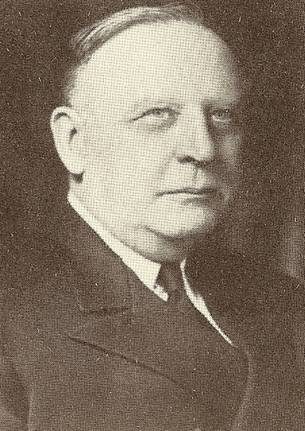
JOHN K. HOSKINS
THE FIRST CHIEF ENGINEER OF THE USPHS COMMISSIONED CORPS
Chief Engineer: 1943-1948
John Kurtz Hoskins was born in Pennsylvania in July 1884, joined the Public Health Service in 1912 and served through 1947. Some thirty-five years before that, in 1913, he had written that the nation needed a program to control water pollution that would combine the best efforts of the states and the Federal Government. In 1945 at the end of World War II, in order to bring his forecast to a successful conclusion, and while serving as chief of the PHS Sanitary Engineering Division and the first Chief Engineer of the PHS, he began taking the steps needed to bring about the enactment of that law. While over 100 bills had been introduced in the Congress in the previous four decades, the differing viewpoints had effectively blocked successful action. His leadership efforts involved bringing together the divergent viewpoints on the proposed legislation in order to allow the Congress to enact an effective Federal pollution control statute.
A seminal action that resulted in that important environmental health legislative initiative was Surgeon General Thomas Parran testimony on Senate Bill. 418, the Taft-Barkley Bill in 1947. At that Senate hearing he outlined in bold strokes a six-point program for a comprehensive national plan designed to produce a healthier America. He noted that the first element of the plan was a “sanitary environment." Dr. Parran had gained national fame by breaking through the deep silence that had prevented the nation from publicly discussing syphilis as a public health problem in his book, Shadow on the Land. In his testimony he commented that "flushing a toilet does not end the problem of the proper disposal of wastes," Thus he and his Chief Engineer, John Hoskins, also made water pollution a subject for popular debate.
The passage of the Federal Water Pollution Control Act on June 30, 1948, was a culminating action of a long line of water pollution scientific, technologic and social policy developments that Hoskins had been involved in that can be traced back to the early 1912 investigations of typhoid fever and river basin pollution.
The Public Health Service Act of 1912 renamed the Public Health and Marine Hospital Service as the Public Health Service. That Act also granted the PHS the authority to pursue studies of the "diseases of man and conditions affecting the propagation and spread thereof, including sanitation and sewage and the pollution either directly or indirectly of navigable streams and lakes." As a follow on to that Act, John Hoskins became one of the first six “sanitary engineers” employed by the PHS at the Ohio River Investigation Station in Cincinnati. In 1918 the Public Health Service Act was amended to permit sanitary engineers to become members of the Reserve Corps of the PHS and Hoskins was commissioned. He was to wait for permanent status until July 23, 1930 when President Hoover signed the Parker Act permitting engineers to become members of the Regular Corps.
From 1912 through 1940, Hoskins served at the Ohio River Investigation Station in Cincinnati, which became a primary locus of water pollution research and investigation. In 1940 while serving as the head of the Station he was reassigned to Washington to join the headquarters staff as Chief of the Sanitary Engineering Division.
A congressional act of 1943 authorized Assistant Surgeon General posts for three officers of the Corps, namely a Chief Engineer Officer, a chief Dental Officer and a Chief Medical Officer of the US Coast Guard. RADM Hoskins was the first such designated Chief Engineer. He retired from the PHS at the end of 1947 to Chevy Chase, Maryland, and continued to stay active in engineering. In 1955, he was awarded a patent for a process to dispose of contaminated hospital waste. He died in May 1958.